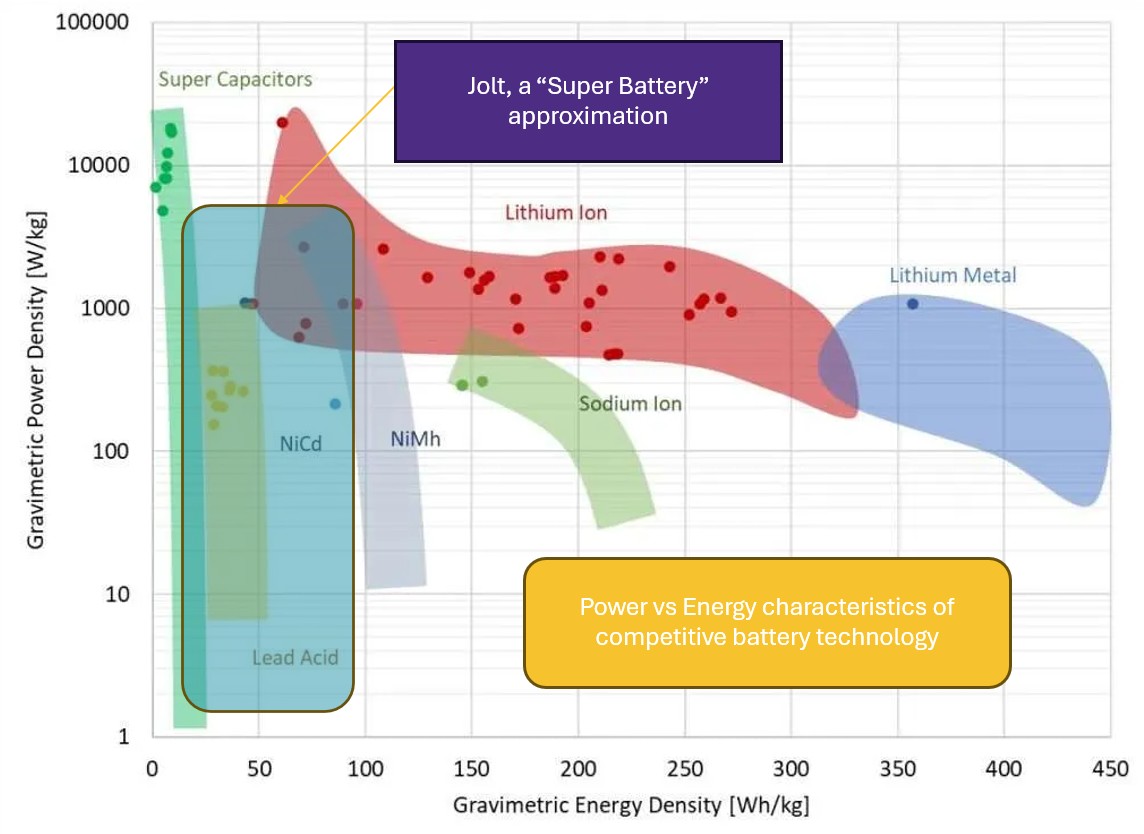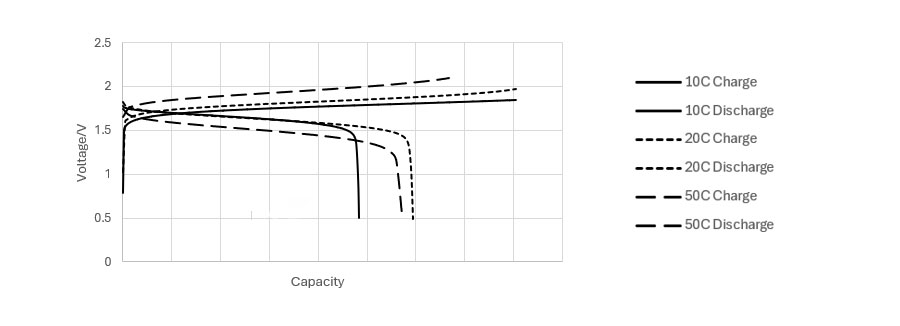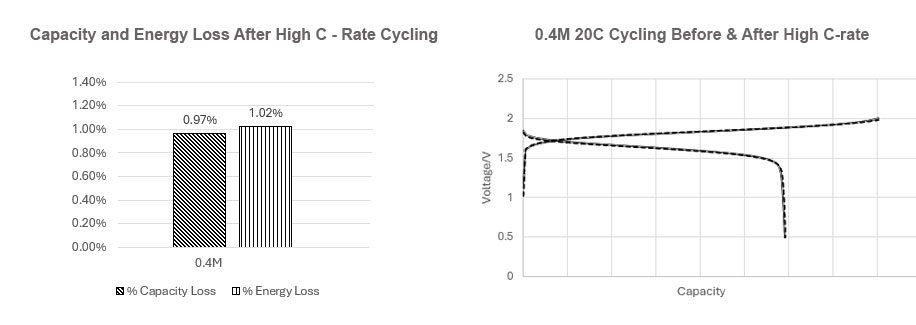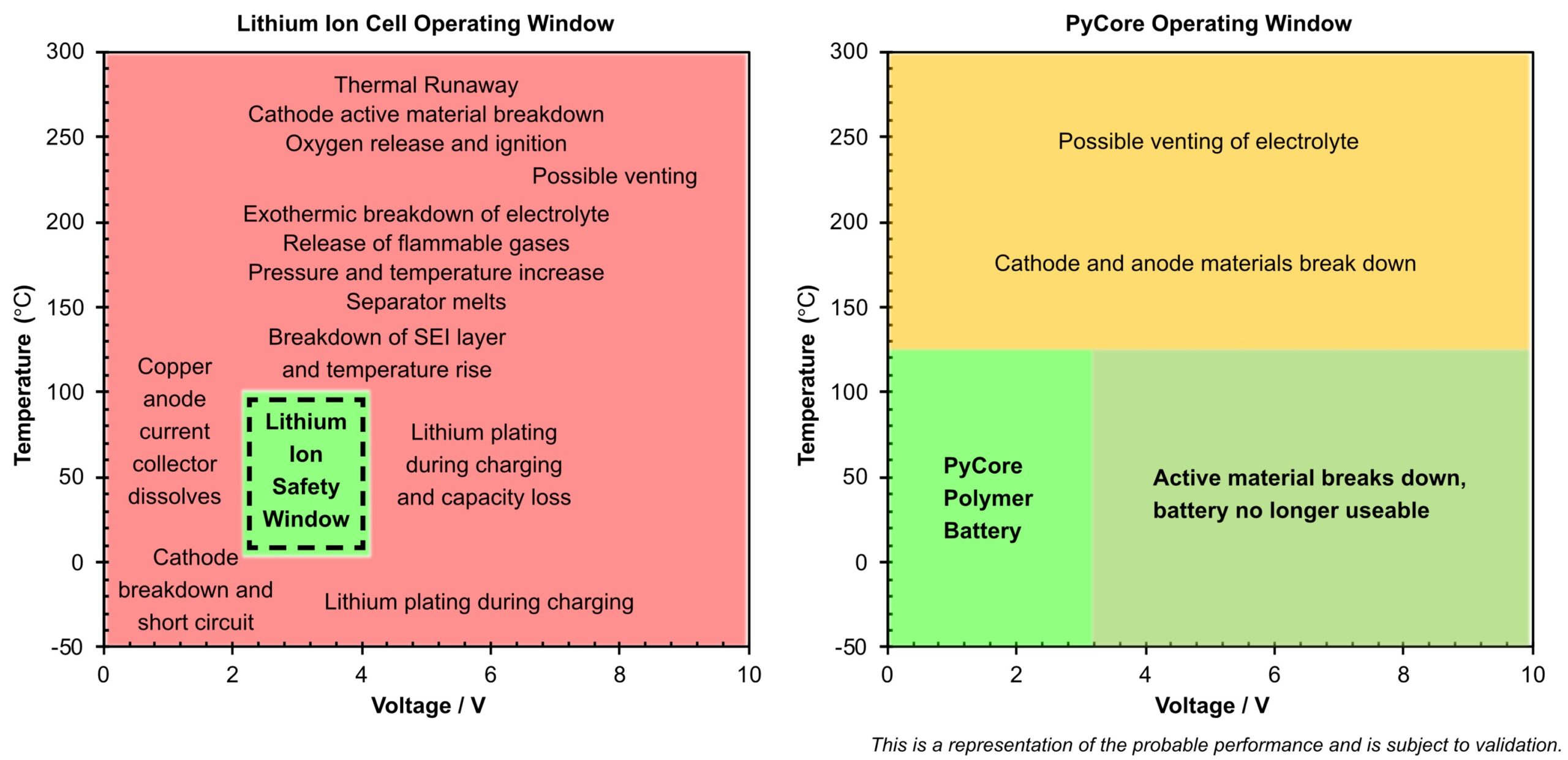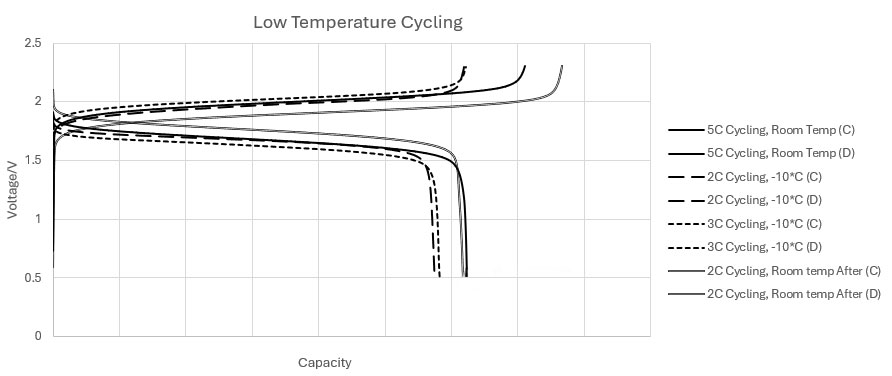Responding to Shifting Energy Needs
From reliable automotive batteries to fast-charging smartwatches, dependable energy access is critical to health, wellbeing and comfort in the modern world. Amid escalating demands and supply chain vulnerabilities, many regions are prioritizing energy security. Yet existing technologies like lithium-ion and lead-acid face mounting challenges in safety, performance, and scalability.
New problems require new solutions, and new solutions require groundbreaking research. Our team decided to tackle this task by exploring an intriguing avenue: electrochemically active organic materials.
Our materials introduce several new classes of organic materials specifically designed to store energy: rapid charging even in low temperatures, superior endurance in extreme conditions, and solving the safety and lifecycle issues that plague legacy systems. What’s more, our materials are free of dependence on foreign minerals and enable secure, cost-effective scaling for hybrids, grids, and beyond.

Solving for the Limitations of Existing Materials
Our material technologies fit a fast-growing market need for safe, affordable energy in applications where Li-ion or lead acid chemistries fall short.
| Li-ion | Lead Acid | Jolt Organic Materials | |
|---|---|---|---|
| Charge Rate | 1 – 5C | 0.1 – 0.3C | Up to 50C (10x faster than Lithium) |
| Temperature Range (Charging) | 0°C to 60°C | -20°C to 60°C | Less than <-20°C (lowest temp not yet observed) |
| Safety | Fire risk from overcharge / discharge & overtemp | Risk of explosion from hydrogen gas, acid spills, and lead toxicity | Compound decomposes on overcharge, limited fire risk |
| Manufacturing | Dry rooms, NMP solvents, SEI formation | Lead grid casting, pastemixing, acid electrolyte filling, handling lead | Uses significantly simplified version of existing methods. No dry rooms, NMP or SEI formation. |
| Supply Chain | China-dependent (lithium, cobalt) | Global supply chain with high recycling rate | U.S. (or global) petrochemical suppliers (local, abundant) |
| Shelf Life & Shipping | Ship at 30% SOC | Ships at 100%, shelf life 6-12 months | Ship at 0% or 100% SOC (safer, longer life) |
| Cost | $80-$3,000 kWh | $80 – $350 / kWh | Est. $20-$80 / kWh |
Material Benefits
The characteristics needed from a next-gen battery material:
Low Temperature Performance
Charges and discharges at high rates (tested at 5C) even at low temperatures, -20°C or lower.
Low-cost, Accessible
Low cost raw materials and a lower cost of manufacturing using existing battery. Fewer BMS and safety controls needed.
Existing Domestic Supply Chains
Compatible with existing chemical manufacturing infrastructure, reducing capital investment for production.
Powerful
The ability to charge and discharge at super capacitor levels enables countless product improvements in both batteries and electronics.
Robust
With a broader operational window for voltage and temperature, our materials offer a real alternative to lead acid.

Performance testing of continuous charge/discharge to 85% SOC at 10C rate without degradation – presented at IFBF Vienna 2025
The Advantages of Organics
Why Organics? Similar to how organic chemistry transformed the display market (think OLEDs vs LEDs), there are several advantages to applying organics to energy storage. It comes down to a few key points: sourcing, performance, design flexibility and safety.
Sourcing to Lower Cost
The organic compounds at the center of our research are derived from well-established chemical supply chains and use readily-available chemical intermediates and feedstocks. This approach lets us leverage existing domestic infrastructure in the oil and gas industry, greatly reducing supply chain complexity compared to global mining operations.
Using abundant, easily-accessible raw materials and an existing supply chain, Jolt’s compounds can scale in manufacturing quickly, reaching an estimated less than $20/kWh for active materials.

Performance
Jolt’s materials stand out with exceptional high-power potential, enabling ultra-fast charging and discharging. While standard lithium-ion batteries typically achieve up to 2-3C and lead-acid around 0.3C, early testing of our organic materials demonstrates 10C continuous capability with pulses as high as 100C. With ongoing electrode design, we anticipate reaching 50C or higher, bridging the gap between batteries and capacitors in power density while maintaining reliable performance in diverse conditions.
Please Note: Charts and data represent ongoing lab testing across multiple materials and are subject to periodic updates. Click to enlarge.
Safety for Design Flexibility
Flammability
Flammability is a serious safety concern for lithium ion and strong acid-based energy systems, like lead acid. Power system fires are often caused by dendrites, sharp metal growths that can form inside Li-ion batteries. These notorious microstructures can pierce the battery’s separator, leading to short-circuiting or serious fires. The risks of dendrite formation can severely limit battery size and application.
Our technology doesn’t use metals, meaning there’s no risk of dendrite formation. There are virtually no concerns about thermal run-away or flammability, making it substantially safer than other energy storage chemistries. This simplicity and safety could also prevent permitting challenges when developing larger energy systems.
Low Temperature Performance
Discharging power at extremely low temperatures is one of the most common ways dendrites form in lithium ion batteries.
By contrast, the organic chemistry makes energy safely accessible at low temperatures without damaging the cell or forming dendrites or causing other safety issues.
Go to Zero Without Damage
Batteries with our materials can safely discharge to true zero without damage or safety risks. When fully discharged, the cells become chemically inert – eliminating fire hazards. Traditional lithium-ion and lead-acid batteries suffer irreversible damage when over-discharged, requiring complex protection circuits and risking fire during charging.
Our zero-discharge capability means batteries can be manufactured, shipped, and stored at 0% charge indefinitely without degradation. Traditional batteries require expensive climate-controlled warehouses and careful inventory rotation to prevent costly losses. This eliminates warehousing costs, shipping restrictions, and transport safety risks – delivering significant supply chain savings and simpler inventory management.
